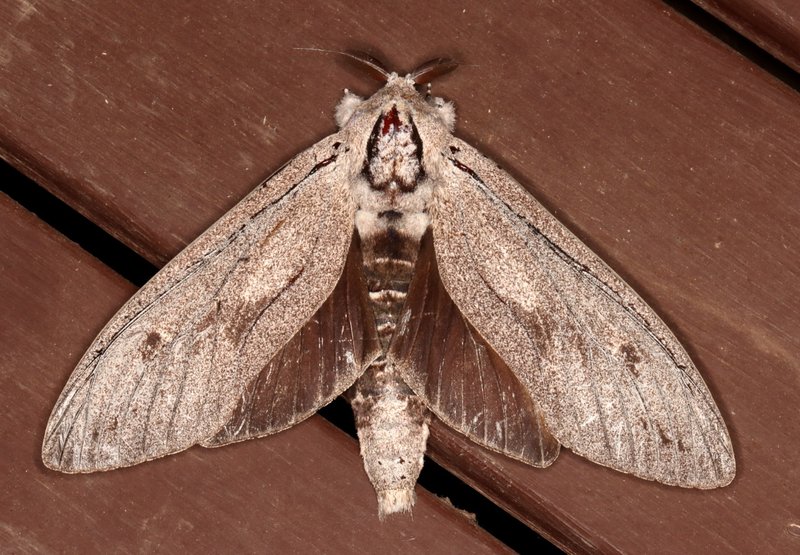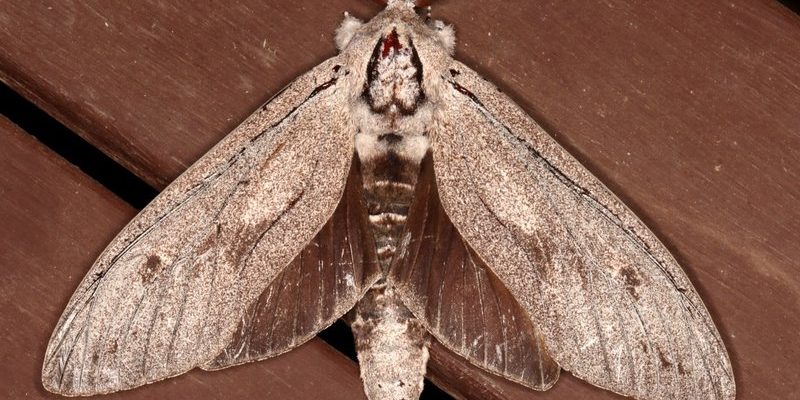
Imagine a creature that embodies both beauty and mystery—the wood moth. This captivating insect, known for its impressive wingspan and unique behaviors, is a fascinating example of nature’s artistry. While you might not see them flitting around your backyard, wood moths play a vital role in their ecosystems, specifically where trees thrive. They’re not just a pretty sight; they’re remarkable creatures that have their own stories to tell.
So, what exactly is a wood moth, and why should you care? These moths belong to several families, most notably the family Cossidae, and they’re also called “carpenter moths.” Their larvae, which are often called “caterpillars,” are known for their destructive tendencies in wood, leading to concerns among homeowners and builders alike. Just like how a curious kid might poke around in the attic, wood moth larvae burrow into trees, contributing to the natural cycle of decay and growth.
Physical Characteristics
Wood moths have some truly striking features. They often showcase large, elaborate wings that can span several inches. Depending on the species, their coloration can range from earthy browns and grays to vivid patterns that help them blend into their surroundings. This camouflage is essential for protection from predators, as many insects rely on stealth to survive.
The body of a wood moth is typically robust and furry, providing warmth during cooler nights. Most notably, they possess long, feathery antennae that are highly sensitive to scents. This sensitivity is crucial for finding mates and locating suitable habitats. When you see a wood moth, it’s not just a coincidence. Each detail has a purpose—much like a well-designed tool in a craftsman’s kit.
| Size: | 2-5 inches in wingspan |
| Habitat: | Forests, woodlands, and sometimes urban areas near trees |
| Diet: | Wood (larvae feed on the wood of trees) |
| Speed: | Slow, fluttering flight |
| Lifespan: | About 2-3 months as adults |
Life Cycle of Wood Moths
The life cycle of a wood moth is a fascinating journey from egg to adulthood. It begins when the female lays her eggs on the bark of a tree, often selecting a species that her larvae will thrive on. After a few days, tiny caterpillars hatch from these eggs and begin their wood-nibbling adventure. They burrow into the tree, creating tunnels that can seriously damage the wood over time. It’s as if they’re sculpting their own cozy homes!
As these larvae grow, they go through several molts, each time shedding their skin. This is a critical part of their development; much like how we outgrow our clothes, these caterpillars must make room for their growing bodies. After a few weeks or months, depending on the species and environmental conditions, they will pupate, wrapping themselves in a protective casing where they undergo a true transformation.
Finally, the adult wood moth emerges. This emergence is a breathtaking sight, as they unfurl their wings and take to the air for the first time. Their primary goal is to find a mate and continue the cycle, ensuring the survival of their species. It’s similar to a graduation ceremony—the culmination of years of hard work that leads to new beginnings.
Habitat and Distribution
Wood moths are found in various habitats worldwide, although they have a strong affinity for forests and woodlands. They are particularly common in areas with abundant trees since that’s where their larvae find nourishment. You might spot them fluttering around trees or resting on bark during warm summer nights when they’re most active. Just think of them as nature’s woodworkers, always nearby to carry out their important tasks.
While they thrive in natural settings, wood moths can adapt to urban areas with ample tree cover. This adaptability highlights their resilience. It’s interesting to note that different species of wood moths will inhabit different regions based on local climate, tree species, and other ecological factors. For example, certain types are more prevalent in temperate zones, while others might favor tropical or subtropical climates.
This adaptability also means that wood moths can be found across continents, from the lush forests of North America to the diverse woodlands of Asia. Their ability to thrive in various environments reveals a great deal about the complex interdependencies within ecosystems. By understanding where they live, we can appreciate how crucial these insects are to their surroundings.
Behavior and Diet
Understanding the behavior of wood moths gives insight into their role in nature. During the day, they often rest in undisturbed areas, camouflaged against the bark of trees. When dusk falls, they become more active, engaging in a delicate ballet of flight and pairing. Their primary method of movement is a slow, fluttering flight—far from the rapid movements of other insects.
As for their diet, it’s primarily composed of wood. The larvae feed on the inner bark and wood of trees, which can cause damage over time. While this behavior might sound destructive, it actually plays a crucial role in forest ecosystems. By breaking down old trees, they contribute to nutrient recycling and create space for new growth, similar to how a gardener prunes back overgrown plants to promote healthier blooms.
Adult wood moths, on the other hand, don’t feed in the same way. Many species actually have reduced mouthparts, meaning they don’t eat at all after reaching adulthood. Instead, they rely on energy accumulated during their larval stages while pursuing their main goal—reproduction. Isn’t it amazing how nature works in harmony, finding balance with both destructive and constructive behaviors?
Ecological Importance
Every creature plays its part in maintaining the delicate balance of our ecosystems. Wood moths are no exception. As larvae, they help decompose dead and dying trees, which is vital for nutrient cycling. By breaking down these materials, they make nutrients available for new plant growth and other organisms. It’s their way of giving back to the environment that nurtures them.
Furthermore, wood moths serve as prey for various birds and mammals. Their presence in the food web highlights their importance as a food source, ensuring the survival of other species. This balance is a classic example of nature’s intricate design—where every link in the chain is essential.
Additionally, wood moths can be indicators of forest health. A thriving wood moth population may suggest a healthy ecosystem with robust vegetation. Conversely, a decline in their numbers may signal environmental stress or habitat loss. They remind us of the interconnectedness of life; when one creature flourishes, others benefit, and when one declines, it can ripple through the environment.
Threats and Conservation
Despite their fascinating lives, wood moths face threats from habitat destruction, climate change, and pesticides. Deforestation, in particular, can decimate their habitats, stripping them of the trees they rely on for survival. As we pave over forests for agriculture or urban development, we unknowingly disrupt entire ecosystems, leaving creatures like wood moths struggling to find their place.
Climate change also poses significant risks. Shifts in temperature and weather patterns can affect their life cycles and food availability. For instance, if trees bloom earlier in response to warmer temperatures, the larvae may miss their food source, leading to serious declines in populations. It’s a pressing reminder of how interconnected everything is—when the climate changes, everything else must adapt, often with harsh consequences.
To aid in wood moth conservation, we can support reforestation efforts and promote sustainable land use practices. Creating awareness about their ecological role can foster appreciation and encourage actions that protect their habitats. Small changes, like planting native trees or advocating for forest conservation, can make a significant difference. Together, we can ensure that wood moths—and the ecosystems they thrive in—continue to flourish.
FAQ
What is the difference between wood moths and other moths?
Wood moths belong specifically to a group of moths that primarily feed on wood or the inner bark of trees during their larval stage. This sets them apart from many other moth species that may feed on leaves or nectar as adults. Their unique diet and behavior make them a special group within the larger order of Lepidoptera.
Are wood moths harmful to trees?
Yes, wood moth larvae can be quite damaging to trees. As they burrow into the wood to feed, they create tunnels that weaken the structure of the tree. Over time, this can lead to significant decay and can ultimately result in tree death. However, they also play a role in nutrient cycling and forest health, as they help break down dead and dying wood.
How do wood moths reproduce?
Wood moths reproduce by mating shortly after the adult moths emerge from their pupal stage. The female lays her eggs on the bark of a tree, where they will hatch and begin their journey as larvae. The mating behavior can vary by species, but it generally involves pheromone signals to attract mates.
Where can I find wood moths?
You can find wood moths in various habitats, including forests, woodlands, and sometimes urban areas with ample tree cover. They are particularly active during warm summer nights, so if you’re curious, stepping outside during those times could increase your chances of spotting one.
Do wood moths have any natural predators?
Yes, wood moths are preyed upon by various animals, including birds, mammals, and other insects. Their camouflaged wings help them avoid some predators, but they aren’t immune to being eaten. This natural predation plays an essential role in maintaining the balance within the ecosystem.
What do adult wood moths feed on?
Interestingly, many adult wood moth species do not feed at all. They rely on energy stored during their larval stage. Some species may have mouthparts that are reduced or non-functional, allowing them to focus entirely on mating and reproduction instead of searching for food.
Can wood moths cause structural damage to homes?
While wood moths mainly target trees in natural settings, their larvae can sometimes be found in wooden structures, especially if the wood is damp or rotting. This can lead to concerns for homeowners. However, the extent of damage usually depends on the species and the condition of the wood.
How long do wood moths live?
The lifespan of wood moths varies by species, but adults typically live for about 2 to 3 months. This is a short time in the grand scheme of life, but it’s packed with important activities like mating and finding suitable places to lay eggs.
Are wood moths attracted to light?
Like many moths, wood moths can be attracted to light, particularly during their active evening hours. However, their behavior may differ from other moth species, depending on their environmental adaptations and specific circumstances. They may prefer resting on tree bark rather than navigating towards artificial light sources.
What can I do to support wood moth populations?
Supporting wood moth populations can be as simple as planting native trees and advocating for sustainable forestry practices. Avoid using pesticides that can harm non-target insects. You can also support local conservation groups that focus on habitat protection, ensuring these beautiful insects and their ecosystems continue to thrive.

